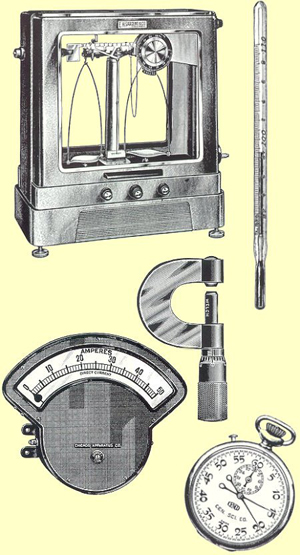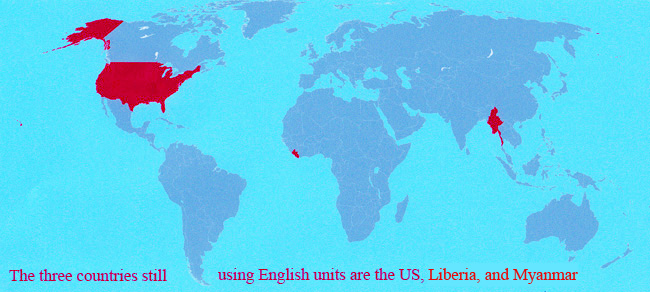Weights and Measures
Today, another look at weights and measures. The University of Houston's College of Engineering presents this series about the machines that make our civilization run, and the people whose ingenuity created them.
 I've been waiting for someone to scold me for using English units on air instead SI. Of course we're not all familiar with the SI or Système international or International System of units. But we all know about the old Metric System. It was introduced in 1791 — a futile attempt to write a wholly rational system of units.
I've been waiting for someone to scold me for using English units on air instead SI. Of course we're not all familiar with the SI or Système international or International System of units. But we all know about the old Metric System. It was introduced in 1791 — a futile attempt to write a wholly rational system of units.
The idea was to put everything on a decimal basis and do away with things like 12 inches to a foot or 16 ounces to a pound. So far so good, but it foundered when they tried to base everything on the logic of nature. Nature refused to be so logical. They defined the meter as a ten-millionth of the inconstant distance from the equator to the North Pole. A gram was the weight of a cubic centimeter of water just before it freezes. And so on.
Those old Metric and English Systems shared many problems. Both used unrelated units of thermal and mechanical energy. We didn't yet have a science of thermodynamics to connect them. We didn't know that mechanical and thermal energy should be expressed in terms of one another. In fact we still talk about foot-pounds and BTUs, while some French still talk about ergs and calories. In SI there's only one energy unit. It's called a Joule.
 The International System still uses a lot of Metric terminology, but the standards have all changed. It still uses the meter, but now the meter's based on the distance light travels in a specified time. We still use a standard object to define a kilogram of mass, though that could change in the near future. And one second is how long it takes for a cesium atom to vibrate a certain very large number of times.
The International System still uses a lot of Metric terminology, but the standards have all changed. It still uses the meter, but now the meter's based on the distance light travels in a specified time. We still use a standard object to define a kilogram of mass, though that could change in the near future. And one second is how long it takes for a cesium atom to vibrate a certain very large number of times.
But our old English units keep their exquisite intimacy with our bodies. The inch mimics the end digit of our thumb. The foot is just that, the length of a human foot. One pound is a comfortable weight in our hand — a nice weight for an SLR camera. The least discernable increment of temperature is much closer to a degree Fahrenheit than it is to a degree Celsius.
Well, maybe there's one place where the English unit is uncomfortable. I've always done better at judging the distance of a kilometer than a mile. Miles are just too long.
But here's the surprise: Just as the French still use meters without basing them on Earth's dimensions, we still use inches with no reference to thumbs. Few of us realize that we too use the International System. We now define our inch as 2.54 SI centimeters. Our pound is based on the same relativistic calculation as the SI kilogram. These are only roses called by other names.
So remember, next time you're in Germany or Mexico, we all really do speak a common language — the International System. Someday, we'll have to break down and use the same units. I'll miss the inch and the ounce, but not that much. In fact, someday you might even hear me quoting the speed of sound on a normal day as 340 meters per second. Someday you might — but not this week.
I'm John Lienhard at the University of Houston, where we're interested in the way inventive minds work.
See the Wikipedia article on the International System of Units. This episode a wholly recast version of Episode 260.
Images: Detail from Dürer's 1514 etching Melencolia, clipart instruments, map below is courtesy of Wikipedia Commons.
